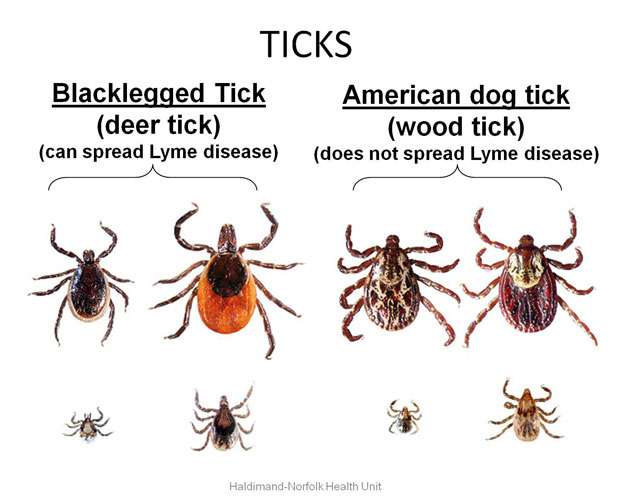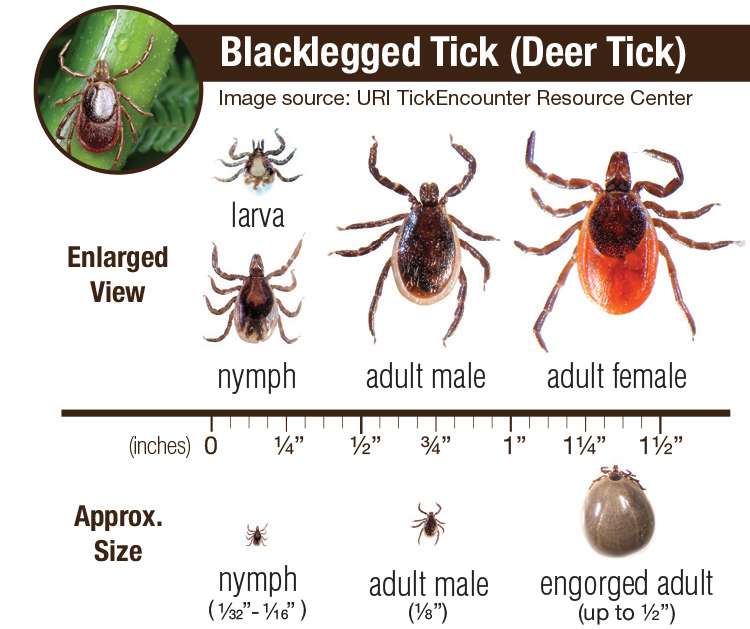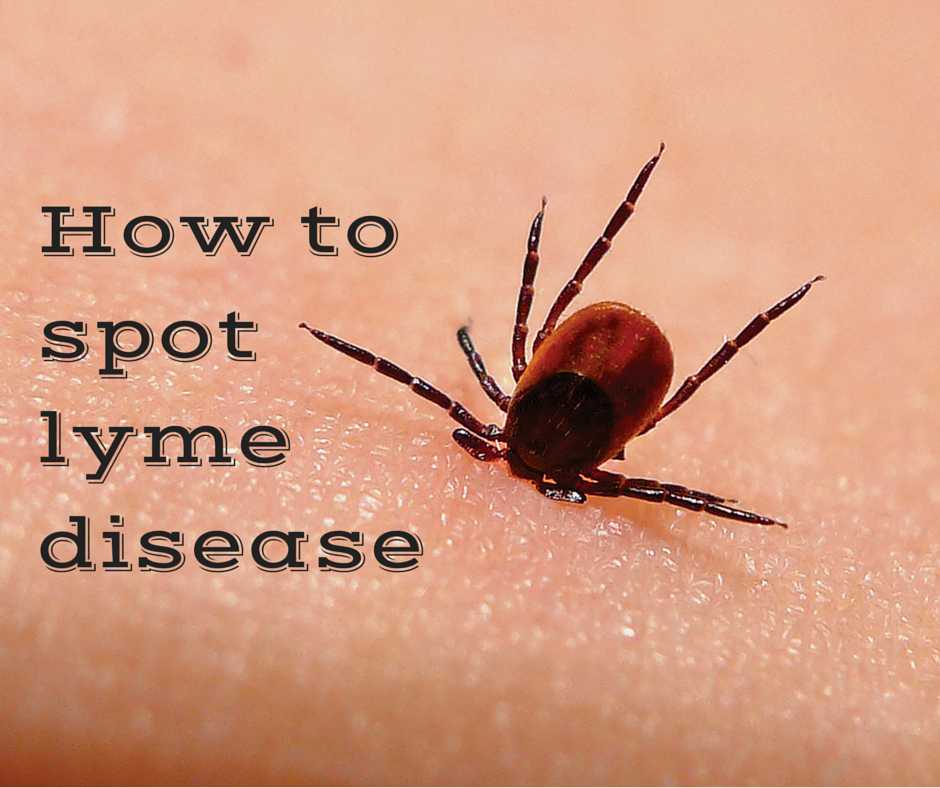Signs & Symptoms Of A Tick Bite
Ticks can carry a host of pathogens that can cause human disease. Lyme disease is the most well-known, however ticks can also carry STARI , Rocky Mountain spotted fever , and more.
Should you discover a tick attached to you, remove it immediately and if possible save the tick in a sealable plastic bag and store it in the freezer. This will preserve the tick and allow you to present it to your physician should you develop symptoms at a later date.
A small bump or redness at the site of a tick bite that occurs immediately and resembles a mosquito bite is common. This irritation generally goes away in 1-2 days and is not a sign of Lyme disease or STARI.
Should you be bitten or suspect you have been bitten by a tick, the following are signs and symptoms to watch for.
Fever, chills, headache, fatigue, muscle and joint aches, and swollen lymph nodes may occur in the absence of rash Rash The area may feel warm to the touch but is rarely itchy or painful The rash sometimes clears as it enlarges, resulting in a target or bulls-eye appearance
If you are experiencing any of the above symptoms, consult your doctor or health physician and inform them that you suspect you have been bitten by a tick.
Are Some Locations More At Risk Than Others
Yes and no. There are areas in which the bacteria is endemic meaning the disease is established and present more or less continually in that community.
In Canada, blacklegged tick populations have been confirmed or are growing in the following areas:
- Southern British Columbia.
- Southern New Brunswick and Grand Manan Island.
- South shore and northern mainland Nova Scotia.
However, it is important to note that ticks can be spread by birds, in particular songbirds that feed off the forest floor. Because these birds are migratory, there is the potential for new populations of the bacteria to spread across the country. This fact means that you do not have to be in an endemic or high-risk area to be at risk of contacting ticks and the disease.
What Are Some Symptoms Of Lyme Disease
The most visible sign of Lyme disease is the characteristic rash called erythema migrans or “bull’s eye.”
This rash:
- Usually develops within one month of the tick bite
- Typically occurs at the site of the bite, starting as a red area and then expanding in size over days and weeks
- Can become as large as 8 inches in diameter and typically develops around an area of clear skin giving it a “bull’s eye” appearance.
Only about 30% of people who develop this rash actually recall having a tick bite.
It is important to know that it is very common to have a small area of redness at the site of a tick bite immediately after the bite due to irritation from the ticks saliva. This is a different rash and does not indicate Lyme disease.
This type of rash will go away after 24-48 hours and does not expand over time. If you are not sure which type of rash is present, it is important to see your health care provider.
Other early signs and symptoms of Lyme disease include:
- Aching joints and muscles
- Swollen lymph nodes
If not treated, Lyme can affect the heart, joints, and nervous system.
Don’t Miss: Can You Get Lyme Disease More Than Once
What Precautions Can I Take Against Tick Bites
- Avoid wooded, brushy, and grassy areas, especially in May, June, and July.
- Wear light-colored clothing so that you can see ticks that get on you.
- Wear long pants and long-sleeved shirts, and shoes that cover the entire foot.
- Tuck pant legs into socks or shoes, and tuck shirts into pants.
- Wear a hat for extra protection.
- Spray insect repellent containing DEET on clothes and uncovered skin.
- Walk in the center of trails to avoid brush and grass.
- Remove your clothing, and wash and dry them at high temperatures after being outdoors.
- Do a careful body check for ticks after outdoor activities.
Ongoing Symptoms Of Lyme Disease

A few people who are diagnosed and treated for Lyme disease continue to have symptoms, like tiredness, aches and loss of energy, that can last for years.
These symptoms are often compared to fibromyalgia and chronic fatigue syndrome.
It’s not clear why this happens to some people and not others. This means there’s also no agreed treatment.
Speak to a doctor if your symptoms come back, or do not improve, after treatment with antibiotics.
The doctor may be able to offer you further support if needed, such as:
- referral for a care needs assessment
- telling your employer, school or higher education institution that you require a gradual return to activities
- communicating with children and families’ social care
Page last reviewed: 05 July 2021 Next review due: 05 July 2024
Don’t Miss: Can Lyme Disease Cause Spinal Stenosis
Which Ticks Carry And Transmit Lyme Disease
Not all bugs are what youd call dangerous. Flies are usually little more than a nuisance. And while the occasional ant bite is frustrating, its rare to have a severe allergic reaction.
Some bugs, though, need to be avoided. Ticks are one such example. Aside from the fact that they have the repulsive habit of attaching themselves to you and sucking your blood, ticks are capable of spreading a wide range of diseases.
One disease commonly associated with ticks is Lyme disease. However, not all ticks are capable of carrying and spreading Lyme disease. In fact, only a handful of tick species transmit disease.
Are you wondering which species of tick are capable of infecting you with Lyme disease? Keep reading to find out.
How To Remove A Tick
Removing a tick is the same for humans and animals. Its important you do not crush or damage the tick because it could cause Lyme bacteria to pass from the tick into your bloodstream.
How to remove a tick.
Also Check: Lyme Literate Doctors Los Angeles
Can Any Tick Bite Give Me Lyme Disease
No, not all ticks can transmit Lyme disease. In this area, only Ixodes scapularis ticks, also called deer ticks, can spread Lyme disease, and only if the tick is infected with Borrelia burgdorferi, the bacteria that causes Lyme disease. Even after a bite from an infected tick, it must be attached long enough usually more than 36 hours to spread the infection to a person.
Submitting Ticks To A Provincial Public Health Laboratory
If possible, send any ticks that you have removed to a public health laboratory in your area. However, tick identification and testing is not done in all provinces of Canada.The following provinces accept submissions:
Contact your local public health authority for details on:
- the tick identification and testing program available in your area
- how to submit a tick for testing
The public health laboratory will:
- identify the tick
- forward only blacklegged ticks to the National Microbiology Laboratory for testing
Read Also: Iv Antibiotics For Lyme Disease
Ticks And Lyme Disease: What You Need To Know
The warmer weather encourages everyone to get outside and enjoy the sun on their face but there is one creature who is waiting in the wings to greet us and our pets…the tick. Few pests inspire the level of paranoia and anxiety as ticks. They are small, making it difficult to feel them crawling on you and if not discovered quickly they latch onto your skin and suck your blood. Even worse…they also transmit diseases!
Thankfully, there are ways to minimize your contact with these pesky pests and natural repellents to ward them off.
How Long Can Lyme Disease Lay Dormant
Lyme disease can remain dormant for weeks, months or even years. When symptoms do eventually develop, they can be severe and patients often need aggressive treatment. Intravenous treatment is often required to treat late-stage infection. Late-stage treatment can last many months as seen in other infections as well.
Recommended Reading: Nad Iv Therapy For Lyme Disease
What To Do If You Are Bitten By A Tick
Remove a tick as soon as possible to reduce your risk of infection.
As a result of staffing and resources being focused on our COVID-19 response, Southwestern Public Health will not be accepting ticks submitted for identification at the current time.
Please refer to the information below for Online tick identification this website will guide you through the process of determining the type of tick you were exposed to.
It is important to know that identifying the type of tick helps to determine your risk of Lyme disease. In Ontario, only deer ticks can transmit Lyme disease. Waiting for further testing to determine if the tick has Lyme disease is not recommended as a factor in deciding if treatment is needed. Your Health Care Provider will assess your risk of Lyme disease based on how long the tick was attached and your symptoms as well as other things.
- Contact a health care provider if you notice fever, chills, headache or the bulls eye rash after being bitten by a tick.
Where Is Lyme Disease Most Commonly Found

Where is Lyme disease most commonly found? Cases of Lyme disease have been reported in nearly all states in the U.S. and in large areas in Europe and Asia, but the most common areas are the Northeast, upper Midwest and northwestern states.
Where are you most likely to get Lyme? Youre more likely to get Lyme disease if you live or spend time in grassy and heavily wooded areas where ticks carrying Lyme disease thrive. Its important to take common-sense precautions in tick-infested areas.
Where is Lyme disease most prevalent in the United States? Among the states where Lyme disease is most common, New Hampshire, Maine, and Vermont have experienced the largest increases in reported case rates since 1991, followed by Delaware and Massachusetts . On average, these five states now report 50 to 100 more cases per 100,000 people than they did in 1991.
What is the most common way to get Lyme disease? Whats the most common way to get Lyme? Blacklegged deer ticks infected with Borrelia burgdorferi transmit the Lyme bacteria when they bite. The ticks, Ixodes scapularis , can also transmit other disease-causing bacteria, viruses, and parasites.
Also Check: Signs Of Lyme Disease In People
Can Lyme Disease Be Treated
In most cases, yes. Antibiotics can effectively treat Lyme disease, especially when treatment begins early. Cases that reach the later stages of the disease, however, can be difficult to treat and some symptoms can persist.
PHAC reports that removing the tick within 24-36 hours usually prevents infection.
How Long Does A Tick Need To Be Attached To Transmit Lyme Disease
Even if the tick is infected with Borrelia burgdorferi the risk of developing Lyme disease is low. The tick has to have taken a “blood meal” from the human host before it can pass along an infection. This means the tick has to be attached and feeding for more than 36 hours before it can transmit Lyme. A tick that has not yet attached to the skin is easy to remove or is not engorged when removed, could not have transmitted Lyme disease or any other infection. Thats why it is important to do regular “tick checks” on yourselves and your children so that ticks can be identified and removed quickly.
You May Like: How To Know If I Have Lyme Disease
Where Are Ticks That Carry Lyme Disease Found
Ticks that carry Lyme disease can be found anywhere their hosts live, in short, anywhere in the world. They prefer moist shady areas. The phrase deer tick, the name commonly used for the species of ticks that carry Lyme disease, is somewhat of a misnomer. Although deer are important as reproductive hosts in the lifecycle of these ticks, other vertebrate animals actually infect the ticks with disease organisms not the deer. These animals include white-footed mice, chipmunks, shrews, several species of ground feeding birds , and many other small mammals. Lyme disease ticks can be found in:
- Leaf litter
- Tall grass, bushy areas and beach grass
- Areas planted with pachysandra or other ground covers
- Lawn perimeters where they meet forest, woodlot or garden edges
Ticks In British Columbia
There are more than 20 species of ticks in British Columbia, but only three species normally bite humans. Although the bites are sometimes painful and slow healing, there is little danger of disease as long as they are removed promptly.
Adult ticks have eight legs, unlike insects, which have six. Ticks cannot jump or fly and do not drop from trees. They require blood as a source of protein for growth and egg development. A few simple precautions will decrease the likelihood of tick bites.
Learn more about ticks that are commonly found in B.C., how to remove attached ticks, and how to prevent tick bites:
Also Check: Neurological Disorders From Lyme Disease
Where These Ticks Are Found
Lyme disease ticks can be found in leaf litter, woodpiles, stone walls, tall grass, beach grass, bushy areas, areas planted with ground covers, and lawn edges that meet forests, woodlots, and gardens. Essentially, Lyme disease ticks can be found anywhere their hosts live, though they tend to prefer moist and shady areas. The deer tick is infected by vertebrate animals like white-footed mice, chipmunks, shrews, ground-feeding birds, and other small mammals that have Lyme disease bacteria themselves.
Avoid Picking Up A Tick
Ticks like areas with tall grass and bushes. They get on people who walk through these areas. Ticks cannot fly or jump.
- Wear long sleeves, pants and fully closed boots/shoes in tall grass, wooded areas or marshlands
- Tuck your pants into your socks
- Wear light-coloured clothing to spot ticks easier
- Use a bug spray with DEET as directed on the label
- Do a tick check after walking in an area where ticks might be
- Shower and towel off to remove any ticks that might not be attached, and then check underarms, neck and groin area
Also Check: Houses For Sale In Lyme Ct
Odds Of Catching Lyme Disease From A Tick Bite
The chance of catching Lyme disease from an individual tick ranges from roughly zero to 50 percent. Risk of contracting Lyme disease from a tick bite depends on three factors: the tick species, where the tick came from, and how long it was biting you. Thats why the sooner you can remove the entire tick, the lower your chances of contracting a tick-borne disease.
Where we live makes a difference in these odds, too. We live in the upper Midwest, and unfortunately for us, a recent study found that up to 50 percent of blacklegged ticks are infected with Lyme disease. The Centers for Disease Control, however, state that it takes a tick 36 to 48 hours attached to the skin to transmit symptoms from tick bites and tick-borne disease.
Whether or not that timeframe is true, I cant say for sure. But I can say that Lyme disease is preventable, and taking a proactive approach to avoiding tick bites can save you a lot of aggravation. If you do spot a tick on yourself or your child, take them to the doctor or Firelands Regional Medical Center QuickCare, where they may be prescribed antibiotics. You can even opt to have the tick tested for Lyme disease.
Most of the time tick bites are harmless and symptoms from tick bites are rare. However general symptoms from tick bites include:
Dr. Mark Schmiedl
- Pain or swelling on the bite site
- Burning sensation on the bite site
- Blisters
- Red spot or rash near the bite site
- Full body rash
- Muscle or joint pain or achiness
- Fever
Should I Be Tested For Lyme Disease After A Tick Bite

Lyme testing relies on detecting antibodies the bodys reaction to the germ not the germ itself. It takes time for the body to make antibodies, at least a couple of weeks after you have become infected. Someone with symptoms of very early Lyme disease is likely to have a negative Lyme antibody test. On the other hand, false positive Lyme tests can happen, so someone without symptoms of Lyme disease who tests positive is unlikely to really have the disease. Testing for Lyme disease shortly after a tick bite is not helpful, says Dr. Baer and may lead to a prescription for a medication that you just dont need.
Also Check: How To Check For Lyme Disease After Tick Bite
Gulf Coast Ticks And Spotted Fever
The pecan-colored Gulf Coast tick lives along the coast in the southern United States and as far inland as Oklahoma. The Gulf Coast tick can transmit the bacteria Rickettsia parkeri, which causes a spotted fever that’s a milder type of Rocky Mountain spotted fever. Signs of this infection may appear anywhere from 2 to 10 days after the bite. The bite itself might look like a pimple and could be followed by a headache, an overall rash, and fever. Treatment to clear up the infection with antibiotics is usually effective.
To avoid the Gulf Coast tick while enjoying the outdoors, cover up with long sleeves and pants, and try using the repellent permethrin on your clothing. Even when you use an insect repellent, always do a thorough body and clothes check for ticks after spending time outdoors.